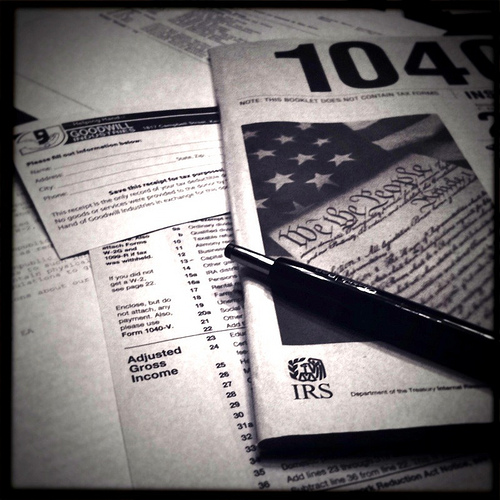If the thought of filing your business taxes makes you head for a bottle of Tums, then take a look at these five business tax tips to simplify the process. Learn how gain more control, take advantage of free or low-cost tax tools, and get educated.
1. Maintain clear records and know what supporting documents to keep. The first rule of business taxes is making sure that you have an effective and efficient system in place for recording your business’ financial transactions and keeping supporting financial documentation, such as W-2 forms, account statements, sales slips, paid bills, invoices, receipts, deposit slips, and canceled checks. These kinds of documents are important to hold on to because they support the entries in your accounting records and on your tax return. For more detailed information refer to Publication 583: Starting a Business and Keeping Records.
2. Get a good accounting software program. With the cost of commercial accounting software suites, such as QuickBooks Pro, becoming more cost-effective (especially when you factor in the available customer support) and with the emergence of several, quality free open source options, such as NolaPro, GnuCash, and TurboCash, Microsoft Office Accounting Express, you practically have no excuse not to use some kind of accounting software package in your business.
3. File your taxes electronically. If your income was $58,000 or less, you may have the option of filing with the IRS’s Free File system which offers free e-filing and tax preparation via commercial software packages. The service is only available via the IRS website. Even if your income exceeded that amount, e-filing is definitely the way to go. You can either file yourself via the IRS’s e-filing portal, or there are several commercial software programs, such as TurboTax, that can do it for you (in addition to helping you maximize your tax deductions).
4. Hire help, ask questions, do your research. When it comes to taxes, ignorance is not bliss- especially if it leads to an audit. If you are just starting out it may be worthwhile to hire a qualified accountant to make sure that you are filing your taxes properly. If you do not choose this option, then make sure you seek out support and knowledge elsewhere. If your using a commercial software package then take full advantage of the customer support. You can also head over to the IRS Small Business Tax Center, and sift through the countless, informative articles and tools designed to help business owners correctly file their taxes.
5. Know your tax payment options. Business tax filers who are unable to cover the full amount of their tax liabilities should make sure to still complete their tax returns with a partial payment and/or file for an extension by April 15th.
Be aware that the IRS allows for installment payments. Those whose tax liabilities total $25,000 or less can use the Online Payment Agreement (OPA) or download a fill-in Request for Installment Agreement, Form 9465 that can be mailed to the address on the bill. Those who owe more than $25,000 may still qualify for an installment agreement, but a Collection Information Statement, Form 433F (PDF) may also need to be completed.
With installment payments filers can indicate how much they can afford to send the IRS each month and on what day they will want to make these monthly payments. The IRS will generally accept an installment agreement if the amount owed is less than $25,000 and the balance will be paid within five years. For filers who owe less than $10,000 and fulfill other requirements, acceptance is guaranteed.

